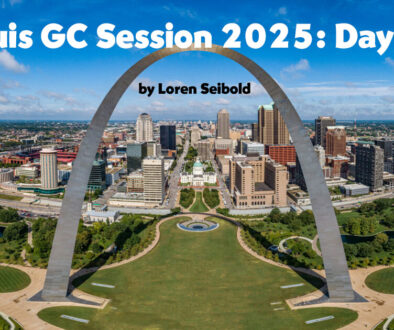Liberty Lessons (for U.S.) from the Plains
by Stephen Foster
The Daniel 2 and 3 account of Nebuchadnezzar’s dream of the image, and of Shadrach, Meshach, and Abednego, is among the most memorable stories in the entire Bible.
1 Corinthians 10:11 indicates that there are many things that happened in the Old Testament “for examples;” and are recorded “for our admonition, upon whom the ends of the world are come.” This story is certainly one of them.
For those who subscribe to Adventist eschatology, the parallels from this Bible story to the times in which we live and which lay just ahead, are readily apparent.
Daniel, of course, told Nebuchadnezzar precisely what the dream (of the image) was, and what the imagery represented; while on the other hand, the other Babylonian wise men could not. Nebuchadnezzar was told that the image’s head of gold represented him and his kingdom. Being an egomaniacal despot, he proceeded to erect an entirely golden actual image; and then mandated worship of it.
This state-sponsored mandate was at odds with the religious beliefs of Shadrach, Meshach, and Abednego; because ‘their’ God prohibited the worship and/or bowing to any image or thing. Their religious liberty, their freedom of conscience, was therefore threatened with abolition or eradication.
To subscribers of Seventh-day Adventist (SDA) exegeses of eschatological Bible prophesy, Daniel and Shadrach, Meshach, and Abednego represent ‘a type’ or foreshadow of those who will be required by law to pay homage to yet another image.
As Nebuchadnezzar’s image was being constructed on the plains of Dura, the worshipful acknowledgement or bowing to it was not necessarily an issue of particular concern for anyone. The reality was that the commandment of the Hebrew’s God to not make “any graven image” was of little meaning or consequence to the subjects of Nebuchadnezzar’s kingdom. Nor was it an issue to Shadrach, Meshach, and Abednego that this commandment was being violated by the citizenry of Babylon. After all the Hebrew youth were actually captives and aliens in a ‘strange land.’ Prior to the official decree to worship the image went forth, there was no controversy.
That the erecting of the image was inspired by a dream, or more precisely, by the interpretation of a dream, indicates there was no way the worship of the image could have been anticipated by those who were not at least privy to the occurrence and details of the dream. We now know that this totaled two people: Nebuchadnezzar and Daniel.
The Hebrew youth were sentenced to the fiery furnace for having violated the state-mandated “worship of the image” law. Ironically even after their deliverance, Nebuchadnezzar, now thoroughly convinced that the God of his Hebrew captives was the true and living God, could not resist his despotic authoritarian instincts and double-downed on his religious mandate theme by decreeing that the God of Shadrach, Meshach, and Abednego be worshipped by all citizens. This also violated principles of religious liberty.
Any future observance of Sunday as an official day of rest is in my view, represented as (an example) by the mandated worship of the image of Nebuchadnezzar on the plains. As the erecting of the image was of no issue to either the Hebrew youth nor to the other subjects of Babylon, so neither is the current unofficial observance of Sunday by the majority of Christendom necessarily an issue. Likewise, on the other hand, the Sabbath is not at issue for those who essentially disregard it; and neither, quite frankly, should it be.
In point of fact, for the Sabbath to be considered an issue of public concern or of public policy would itself be in violation of liberty of conscience. It would also, it seems, be in violation of the Colossians 2:16 principle of (not permitting) judgment in any such matter. It is entirely possible the Sunday versus Sabbath issue is not, and should not be controversial until such time that civil authorities attempt to legislate the weekly observance of any day for any reason; just as the erecting of the image was not an issue for either the Hebrew youth or the citizens of Babylon until each was confronted with the choice of obeying God or obeying the state.
Is it also possible the only people who can anticipate this confrontation are those to whom prophetic symbolism is revealed? Ladies and gentlemen, that would be us.



